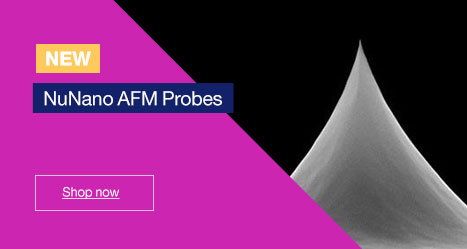When referring to optics and microscopy, resolution is simply defined as the minimum distance at which two separate points in a field of view can be distinguished as distinct.
We have looked at numerical aperture (NA) in a previous article and indeed, NA is related to resolution. However, resolution isn’t just dependant on the NA of an objective, but on the NA of the microscope system as a whole. This takes into account the NA of the sub-stage condenser for example. The higher the NA of the whole optical components of the microscope, then the greater the detail you will be able to resolve.
There are two linked mathematical concepts which need to be taken into consideration when dealing with resolution; ‘Airy Discs’ and the ‘Rayleigh Criterion’.
Airy discs
George Biddell Airy (1801-1892) was an English mathematician and astronomer (he was the ‘Astronomer Royal’ from 1835 to 1881). In 1835, his paper entitled ‘On the Diffraction of an Object-Glass with Circular Aperture’ was published in the Transactions of the Cambridge Philosophical Society. There are some 19 equations in Airy’s 1835 paper which, you will be pleased to read, I won’t go into here! Although Airy was writing from the point of view of an astronomer and describing rings of light surrounding the image of a star, these observations are relevant to many other optical systems, including the microscope. The Airy Disc appears (from above) as a bright central point of light with rings or ripples around (think of the ripples of a stone as it drops into still water). The central point of light is the optimally focussed light which can be determined by a circular aperture in a perfectly aligned system. The ‘Airy Pattern’ is a more appropriate terminology when it comes to describing the optics and resolution of a microscope. The Airy Disc assumes a single point or source of light, whereas, in reality, we are dealing with numerous points of light in a single specimen view.
The Rayleigh Criterion
John William Strutt, 3rd Baron Rayleigh (1842-1919) was an English physicist who co-discovered the noble gas argon (and was subsequently awarded the Nobel Prize in 1904 for this achievement). Much of Strutt’s work was based on acoustics, but he also invented the ‘Rayleigh Criterion’ which explains that when two Airy Discs are far enough apart to be resolved as separate entities within an image, then they are said to meet the Rayleigh Criterion. When two Airy Discs are closer than the Rayleigh criteria, then they merge and cannot be resolved as separate details.
Calculating resolution
Resolution in microscopy is dependent on a number of factors. To achieve the maximum resolution using a microscope, the whole system has to be correctly aligned and the properties of each of the optical components of a microscope should be complimentary to each other. For correct alignment, check back soon for my next article entitled ‘Koehler Illumination: A History and Practical Set Up’.
The factors which determine resolution include the wavelength of light used to image a specimen- the shorter the wavelength, the more detail will be resolved. The next factor to consider is Numerical Aperture (NA). If you read my previous article on NA, you will remember that this is dependent on not only the refractive index of the medium between the specimen and the objective, but also the angular aperture of the objective.
When the NA of the sub-stage condenser and the objective are different, then we can use the following formula to calculate resolution;
R = 1.22 l / NAcond + NAobj
Where ‘R’ is the resolution
‘l’ is the wavelength of light
NAcond is the numerical aperture of the condenser
NAobj is the numerical aperture of the objective
If the objective and the condenser have equal NA, then the formula can be simplified to;
R = 0.61 l / NA
So, where does the figure of ‘1.22’ come from? If you really want to know, this figure is the approximate first zero of the Bessel function of the first kind of order one divided by Pi. Bessel functions are used when solving problems in spherical or cylindrical coordinate systems. For the purpose of calculating resolution in microscopy, it is simpler to assume 1.22 as a constant!
The limit of resolution in light microscopy is approximately 200 nm. Remember that NA= n • sin(θ), where n is the refractive index and θ is half of the angular aperture. The resolution limit is calculated using the following information;
- The maximum angular aperture of an objective is around 1440 (see my previous article on NA). The sine of half of this angle is 0.95.
- As air is generally the medium between the condenser and the slide, then the NAcond value will equal 0.95 (remembering that air has a refractive index of 1.0).
- When using an immersion objective with oil which has a refractive index of 1.52, the NAobj value will equal 1.45.
- The shortest wavelength of visible light is violet which has a l value of 400 nm.
- When putting these figures into the first equation above we have;
R = 1.22 x 400 /0.95 + 1.45
Therefore R = 203 nm.
Breaking the resolution barrier
The above limit of resolution in optical microscopy meant that objects smaller than 200 nm could not be resolved. However, techniques have been developed which have pushed this limit back even further. These methods are known as ‘Super-Resolution Microscopy’ and have achieved resolution down to tens of nanometres. There are many different methods which come under the umbrella-term of super-resolution microscopy and I will cover the main ones in a forthcoming article.
AUTHOR: Martin Wilson


